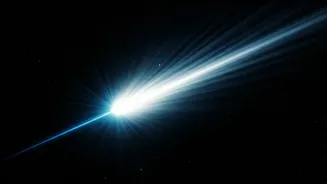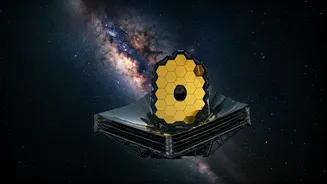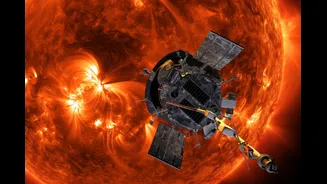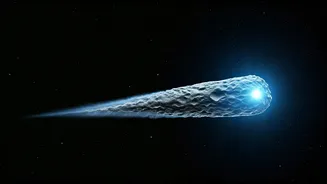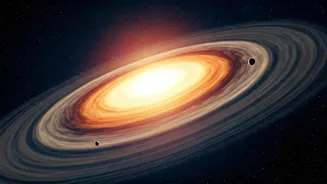Interstellar Intrigue Begins
The journey of 3I/ATLAS, an interstellar comet, is being closely observed by astronomers. The comet's trajectory brought it closer to the sun, an event
that provided a unique chance for scientists to examine it more closely. Initial expectations had to be revised when the comet started exhibiting an unexpected intensification in its brightness, a characteristic that piqued the interest of the scientific community. This behaviour deviates from common patterns, triggering many investigations into the causes behind its unusual luminosity. Astronomers are now actively working to interpret the comet's reactions to solar radiation and the substances influencing its reflection patterns.
Unexpected Brightening Observed
As 3I/ATLAS approached the sun, its observed brightness started to increase at an unforeseen rate. This swift increase in luminosity significantly surprised researchers and became a central focus of study. The brightening phenomenon suggested that the comet's interaction with the solar environment was more complex than initially anticipated. This deviation from anticipated behavior pushed scientists to reevaluate the internal composition and surface qualities of the comet. Various hypotheses emerged to explain the enhanced brightness, with investigations focusing on processes such as gas release and ice sublimation, driven by solar radiation.
Why The Brightness Shift?
Several theories aim to clarify the accelerated brightening of 3I/ATLAS. Some scientists propose that solar radiation may be causing ice on the comet's surface to rapidly sublimate, releasing large amounts of dust and gas. This process may lead to a reflective cloud around the comet, thereby increasing its overall brightness. Other models suggest that as the comet approaches the sun, it might be experiencing thermal fracturing or other structural changes, exposing fresh, highly reflective surfaces. Researchers are utilizing various astronomical tools and observational methods to collect more data, aiming to narrow down the possible causes. Analyzing data from different wavelengths and studying the spectrum of light reflected by the comet are crucial for gaining deeper insights.
A Visitor's Composition
Studying 3I/ATLAS offers a chance to explore the make-up of objects beyond our solar system. The comet's structure and elements can shed light on the conditions present during the formation of other planetary systems. Observations of this comet can reveal clues about the kinds of materials present in interstellar space. Analyzing its composition and structure is vital for understanding the origins of comets and the characteristics of space throughout the universe. Every piece of information gathered offers a window into the diverse compositions found beyond our solar system.
Future Observations & Research
The ongoing investigation into 3I/ATLAS involves using different telescopes and instruments for further observation. The scientific community is set to continue collecting data to examine the comet's behavior. Scientists will monitor the comet's changes closely as it navigates around the sun and continues its journey. Future observations may provide a more comprehensive picture, helping to understand its nature. By comparing the observations with theoretical models, scientists can gradually unveil the secrets of this interstellar guest. This study is an important step towards expanding our understanding of interstellar objects.


